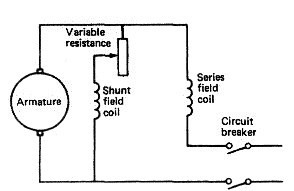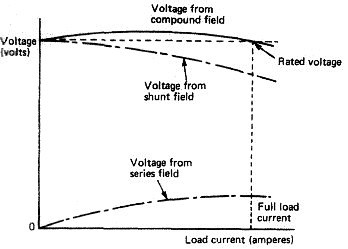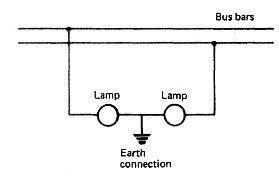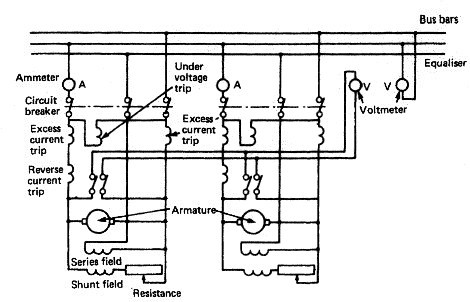
Direct Current Supply & Distribution, D.C. Generators Field Connection & Earth Lamp Circuit
A current is produced when a single coil of wire is rotated in a magnetic
field. When the current is collected using a ring which is split into two
halves (a commutator), a direct or single direction current is produced.
The current produced may be increased by the use of many turns of
wire and additional magnetic fields.





